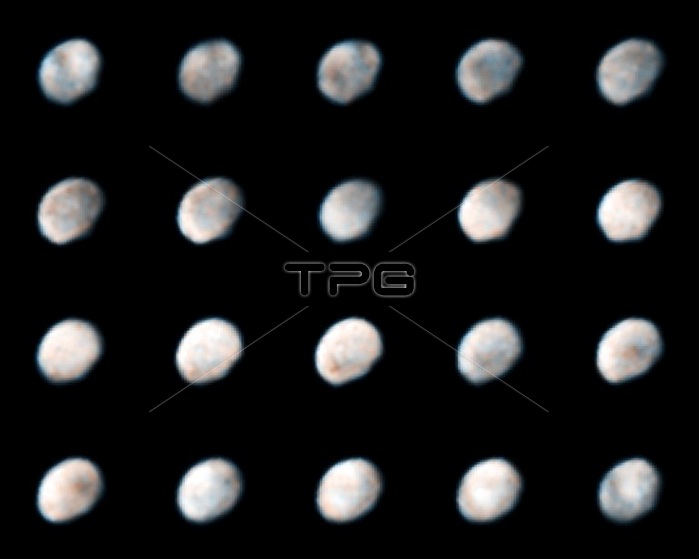
To prepare for the Dawn spacecraft's visit to Vesta, astronomers used Hubble's WFPC2 to snap new images of the asteroid. These images were taken on May 14 and 16, 2007. Each frame shows time in hours and minutes based on Vesta's 5.34-hour rotation period. Using Hubble, astronomers mapped Vesta's southern hemisphere, a region dominated by a giant impact crater formed by a collision billions of years ago. The crater is 285 miles across, which is nearly equal to Vesta's 330-mile diameter. The images show the difference in brightness and color on the asteroid's surface. These characteristics hint at the large-scale features that the Dawn spacecraft will see when it arrives at Vesta in 2011. Hubble's view reveals extensive global features stretching longitudinally from the northern hemisphere to the southern hemisphere. The images also show widespread differences in brightness in the east and west, which probably reflects compositional changes. Both of these characteristics could reveal volcanic activity throughout Vesta.
| px | px | dpi | = | cm | x | cm | = | MB |
Details
Creative#:
TOP22311545
Source:
達志影像
Authorization Type:
RM
Release Information:
須由TPG 完整授權
Model Release:
N/A
Property Release:
No
Right to Privacy:
No
Same folder images:

 Loading
Loading